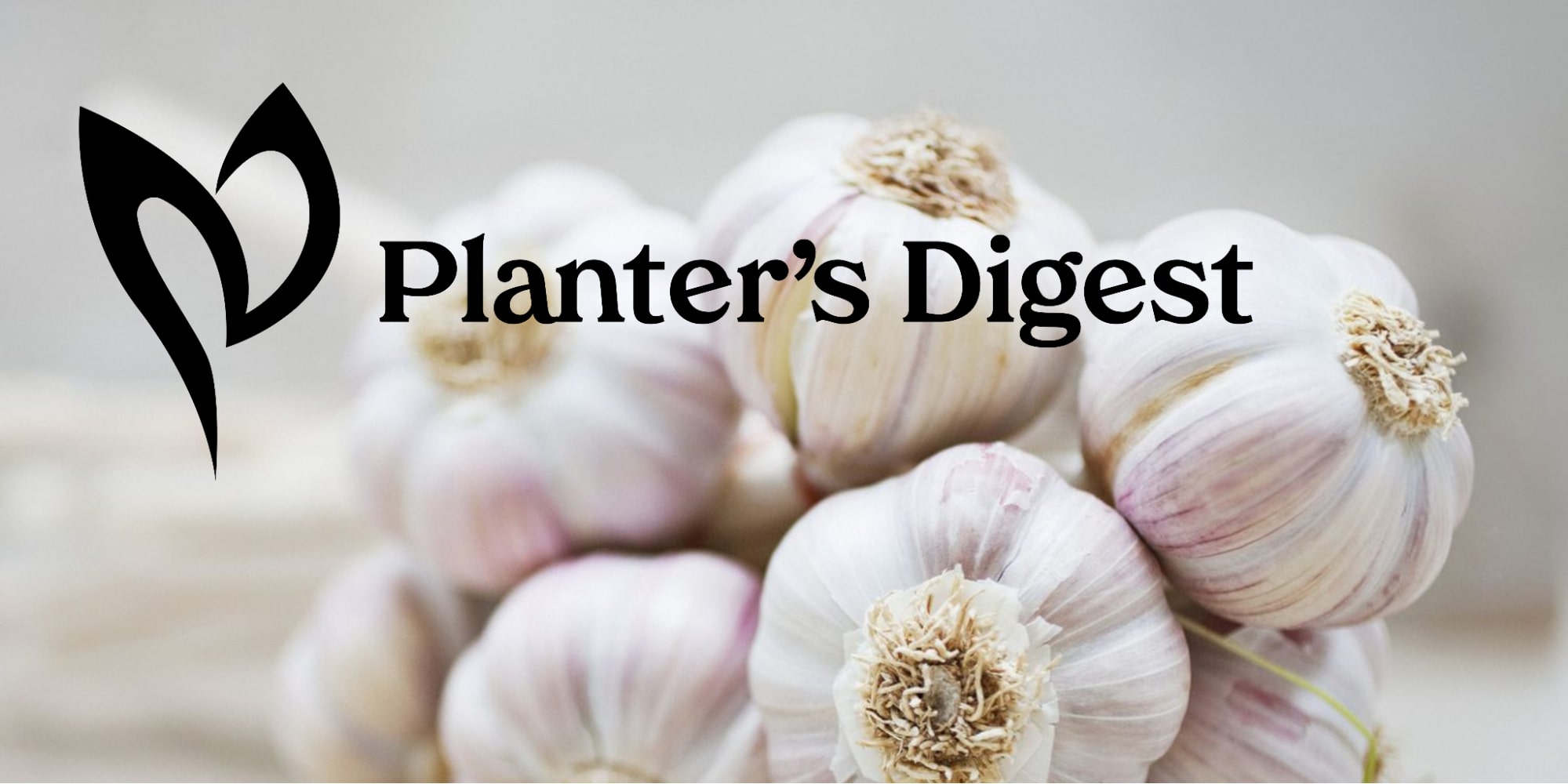
Imagine this: you, strolling through your aromatic garden, armed with the knowledge to quench the thirst of your garlic babies like a true watering wizard. We’ll unravel the mysteries of moisture, striking that perfect balance between parched and soggy.
Let’s face it, garlic likes a sprinkle, not a monsoon. So buckle up, my fellow green-thumbed comrades, as we embark on this flavorful adventure together – garlic greatness awaits!
How Often to Water Garlic

How often you should water garlic depends on a host of different factors. The table below summarizes watering frequence based on various considerations:
| Condition | Frequency of Watering |
| Hot and dry weather | Once a week or every 3 to 4 days |
| Cooler and wetter weather | Once every 10 to 14 days |
| Sandy soil | Once every 3 to 4 days, or as needed |
| Clay soil | Once every 10 to 14 days, or as needed |
| Active growth stage | Once a week or every 3 to 4 days |
| Dormant period | Once every 2 to 3 weeks, or as needed |
| Larger bulbs | Once a week or every 3 to 4 days |
| Mulched soil | Once every 10 to 14 days, or as needed |
| Well-fertilized soil | Once every 7 to 10 days, or as needed |
| Poor drainage | Once every 2 to 3 weeks, or as needed |
| High planting density | Once every 2 to 3 days, or as needed |
| Deep planting depth | Once every 3 to 4 days, or as needed |
| Drip irrigation system | Once every 7 to 10 days, or as needed |
| Soaker hose system | Once every 7 or 10 days, or as needed |
Let’s sprinkle some extra wisdom to ensure your garlic stays as fresh as a cucumber. Now, to ensure your garlicky buddies stay happy and hydrated, keep these basic guidelines in mind.
Tips on Watering Your Garlic Plant Successfully
Just for that extra gardening dash, there are a few more tips to take your garlic game up a notch.
1. Water your garlic plants regularly.

Garlic, like a diva in need of hydration, thrives on consistent watering for its proper growth. It’s like a spa day for the bulbs, keeping them plump and fabulous.
Now, let’s take a peek at the table above and put our detective skills to work, shall we? With a little Sherlock Holmes-ing, you can estimate your garlic’s watering frequency like a pro.
Using the table as your trusty sidekick, you can gradually tailor your watering schedule to match your garlic’s desires.
But, if you find yourself in doubt, simply channel your inner soil detective and examine the top-inch layer where your precious garlic is getting its beauty sleep.
If it’s feeling as dry as a desert, well, it’s time to unleash the waterworks. On the other hand, if it’s still as moist as a tropical rainforest, it’s best to let it be for now and revisit the soil investigation the following day.
2. Use the correct amount of water.
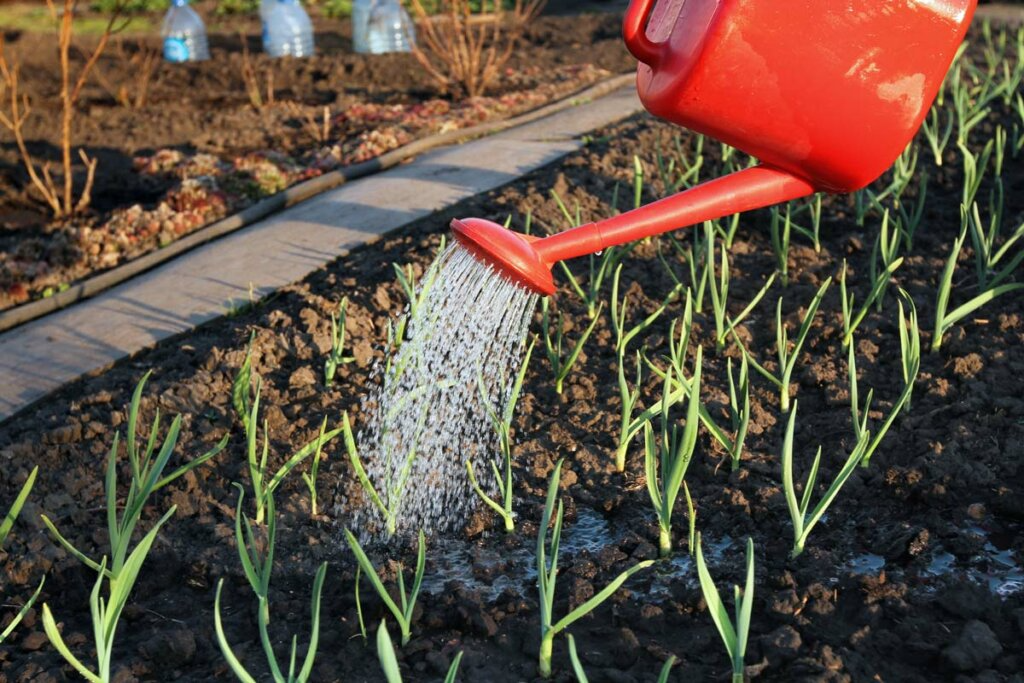
Aside from establishing the frequency, you’ll also want to make sure your garlic bulbs stay hydrated without drowning them. We don’t want any soggy garlic mishaps, do we?
To keep it simple and effective, a nifty trick is to aim for around an inch of water per week for your garlic bulbs. Now, if you’re dealing with a larger garlic bed, think in terms of giving them a respectable 5 to 10 gallons of water per square foot.
It’s like quenching their thirst without turning your garden into a waterpark! And while we’re at it, don’t forget to be a vigilant garlic guardian.
Keep an eye on the usual suspects like growing stages, soil conditions, and plant systems. It’s like playing Sherlock Holmes with your green thumb.
Make room for adjustments based on weather conditions.
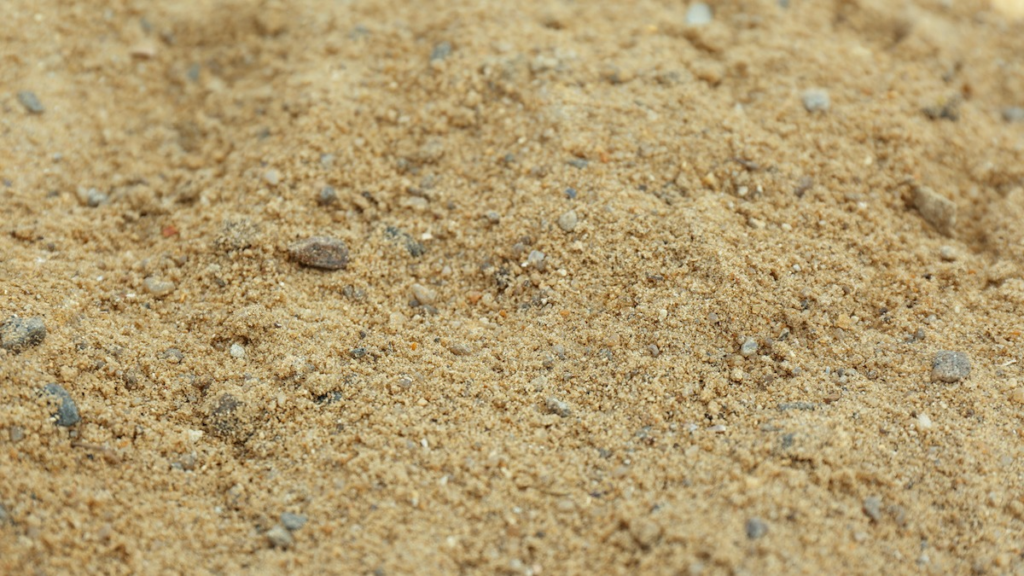
Naturally, it’s essential to consider the weather in your neck of the woods. Let’s say it rained cats and dogs yesterday, and now your garlic bulbs are eagerly awaiting their turn for hydration.
Take a moment to tap into your inner Sherlock Holmes and assess the situation. More often than not, the soil will still be feeling a bit damp and won’t be begging for a drink just yet.
Now, when you’re dealing with hot and dry weather, it’s a whole different ballgame for our garlic buddies. They might be as parched as a desert wanderer in need of an oasis.
In such scorching conditions, it’s wise to provide our garlic bulbs with regular watering. This will keep the soil comfortably moist, ensuring our little alliums don’t feel like they’re stranded in a drought-stricken land.
Remember, my savvy gardener, understanding the climate and the needs of your plants is the secret to growing a flourishing garden without breaking a sweat.
4. Avoid overwatering and underwatering
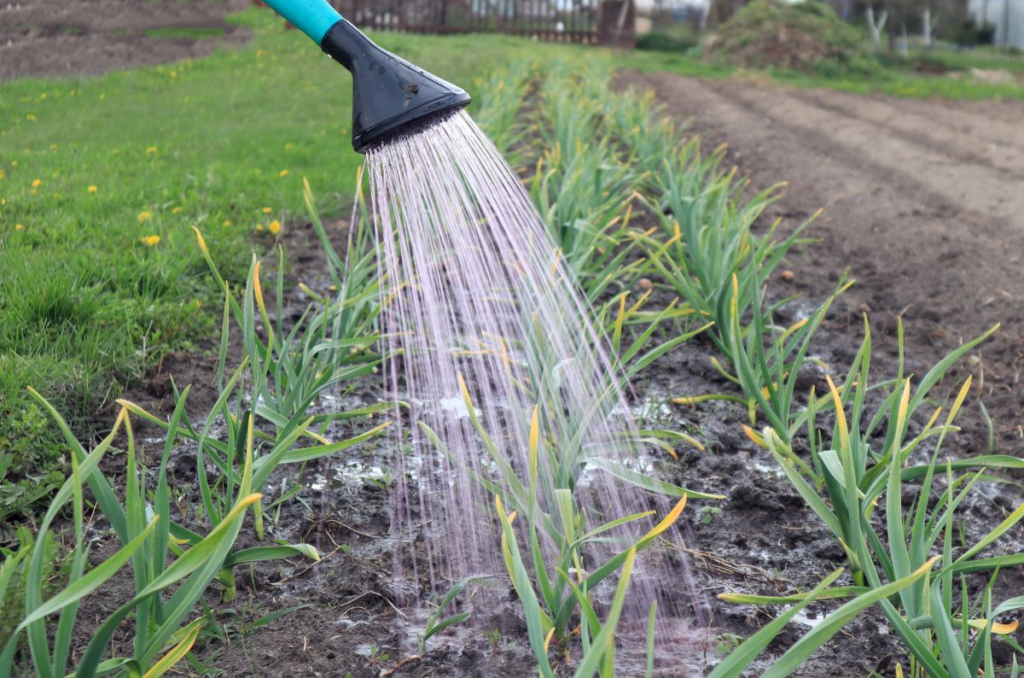
Both overwatering and underwatering are like ill-fitting shoes—neither provides the right conditions for your garlic bulbs to thrive. Let’s dive into the reasons why.
Overwatering becomes a breeding ground for fungi, giving your garlic bulbs a rather unappealing soft, black, and mushy makeover. Not exactly the kind of transformation you were hoping for, I presume.
And let’s not forget the unwelcome guests it attracts—pests who see the rotting bulbs as an all-you-can-eat buffet.
They might even RSVP to the party and infest your other garden darlings. No one wants gatecrashers like that!
On the flip side, underwatering your garlic bulbs is akin to leaving them in the desert without a canteen.
The result? Garlic mummies. Those crispy husks won’t be winning any culinary awards, I’m afraid.
When it comes to assessing your soil’s moisture, take a peek at the top-inch layer. If it’s as dry as a stand-up comedy show with no laughs, it’s time to give your garlic bulbs a refreshing drink.
Water Requirements for Garlic According to Season
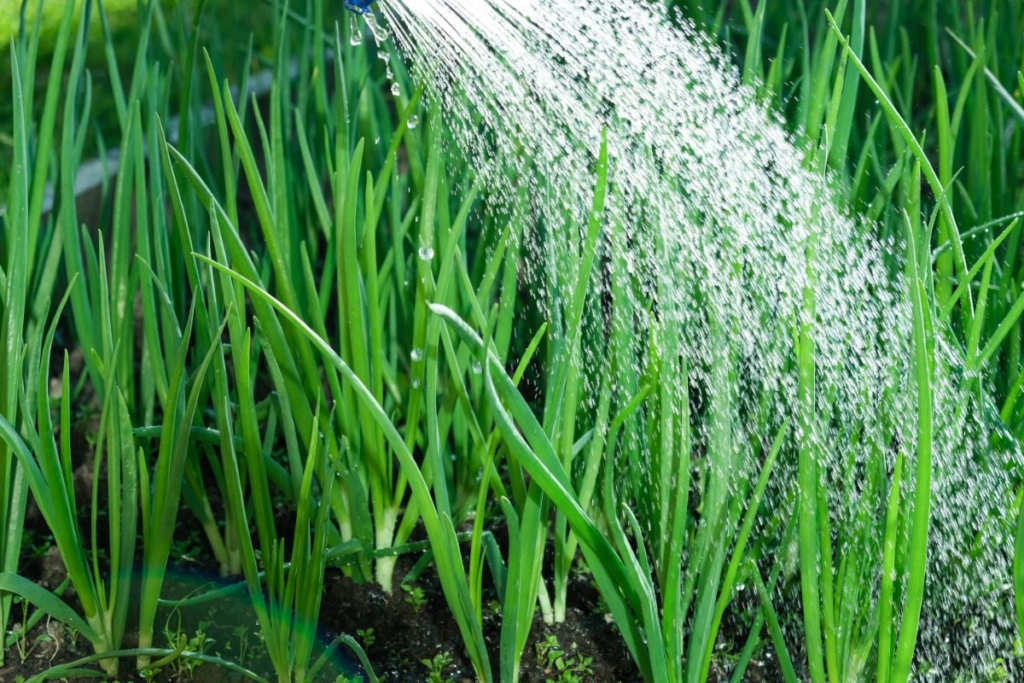
In addition to taking note of the present atmospheric state, we must also consider the ever-changing seasons. This becomes particularly useful in regions where the mercury plummets during winter.
It’s quite evident that as the seasons warm up, your plants will require a more frequent sip compared to their thirst during the colder months.
To provide you with a handy reference on the watering regimen and quantity for each season, please refer to the table below.
| Season | When to Water | How Much to Water |
| Spring | Twice a week | 1 inch of water or 5 to 10 gallons of water per square foot |
| Summer | Twice a week | 1 inch of water or 5 to 10 gallons of water per square foot |
| Fall | Once a week | 1 inch of water or 5 to 10 gallons of water per square foot |
| Winter | Once a month | 1 inch of water or 5 to 10 gallons of water per square foot |
Garlic Bulb Water Requirements Before Harvesting
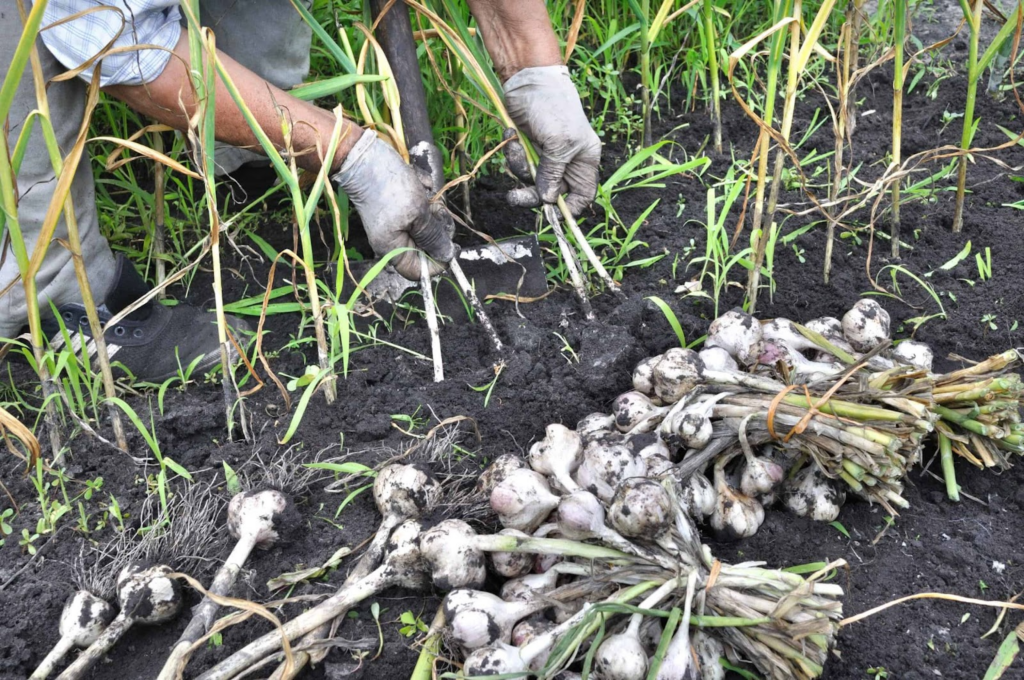
As your garlic bulbs start to mature, they will require less water than they did during their active growing season. Think of it as a transition from being a thirsty teenager to a self-sufficient adult.
Three or four weeks before harvesting your garlic, you’ll need to start reducing the amount of water they receive. It’s like gradually weaning them off a summer fling – a slow and gentle separation.
Two weeks leading to the harvest, you should stop watering the garlic bulbs altogether.
When the garlic bulbs sense a lesser amount of water, they will automatically start their dormancy stage.
The thicker skins also keep the bulbs from rot and other damage. It’s like giving them a sturdy shield, ready to fend off any culinary challenges that come their way.
To give you an idea, garlic bulbs usually take eight to nine months to grow from the time they were planted to the time of harvest. That’s longer than waiting for a trendy avocado toast at a brunch spot on a Sunday morning!
These include the garlic variety, the weather, and the location. It’s like a culinary trifecta – the perfect combination of soil, sun, and seed that determines the fate of your garlicky endeavors.
Just a quick head’s up, though. Once you harvest your garlic bulbs, you should cure them for several weeks to help improve their flavor as well as their storage quality.
However, in dryer climates, you might need to water your garlic bulbs a bit more. It’s like quenching their thirst in a desert oasis, making sure they don’t wither away.
Doing so will avoid overwatering your garlic bulbs as you prepare them for harvest. No one wants soggy garlic, trust me – it’s like trying to dance in waterlogged socks – not a good time.
After all, proper planning can help you ensure that you get the best-tasting aromatic garlic bulbs! So take the time to give your garlic bulbs the care they deserve, and you’ll be rewarded with culinary delights that will make your taste buds do a happy dance.
Garlic Bulb Water Requirements According to Soil Type
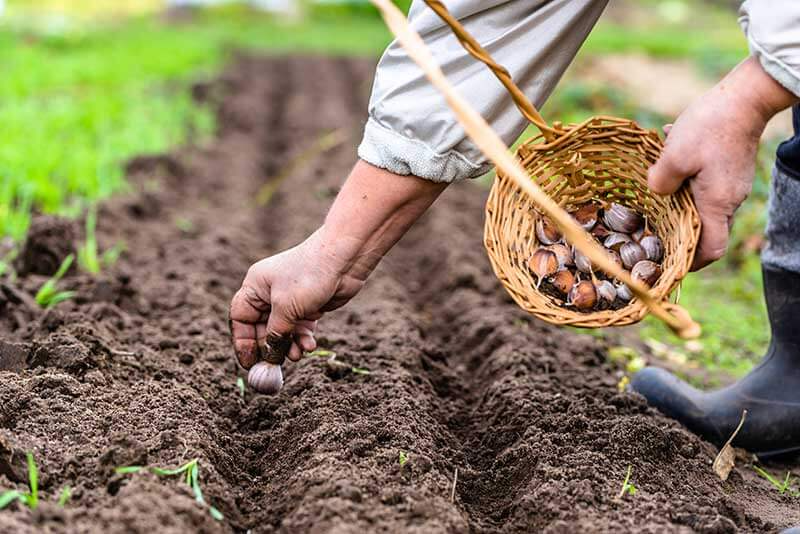
Now, when it comes to finding the perfect match for our garlicky pals, loose well-draining soil is like a dream come true. But hey, not all gardens are blessed with such luck, right?
So, let’s take a stroll through different soil types and see how garlic feels about them, and of course, we’ll chat about the watering routine too, because hydration is key, my green-thumbed friends.
Clay Soil
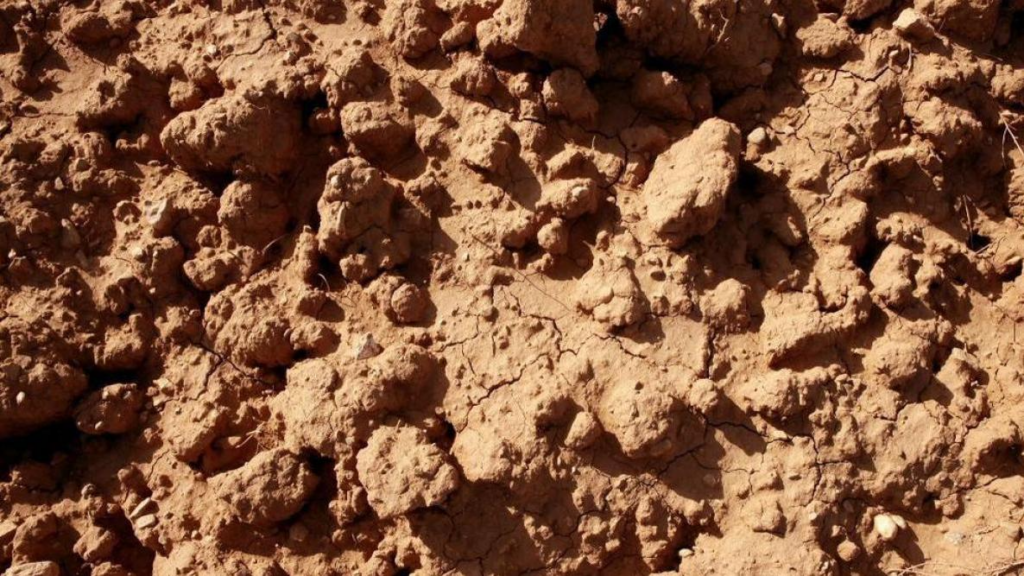
Clay, oh boy, it sure knows how to cling to water like a stubborn ex, but it can be a bit too dense for its own good. Those high-clay soils? Well, they can be real party-poopers, making it hard for water and nutrients to join the underground bash.
And hold your breath, because there’s more! Imagine this: water just chilling on the soil surface, like a reluctant swimmer avoiding the deep end.
Yeah, that’s what clay soils can do, inviting those unwanted guests like root rot to crash the party. Now, if you’re thinking about growing garlic bulbs, my friend, steer clear of the clay-ridden dance floor.
Instead, give that soil some organic matter lovin’ to loosen things up, like a good DJ dropping the bass. That way, you’ll improve water drainage and have your garlic grooving in no time.
Sandy Soil

This soil type is as opposite as night and day from those clay-heavy soils. Sandy soil is like a sponge on steroids—it’s super porous and loves to let water do its own little Houdini act, disappearing in a flash.
When it comes to growing your precious garlic bulb, sandy soils take a slight lead over their clay-laden counterparts.
Just keep in mind that this means you’ll have to give it some extra love in the watering department, going slow and deep to reach those precious roots.
Now, I wouldn’t exactly roll out the sandy carpet for your garlic bulbs, but if you insist on playing matchmaker, consider adding more potting soil to the mix. It’s like giving them a moisture-retaining hug, keeping them cozy and content.
Loamy Soil
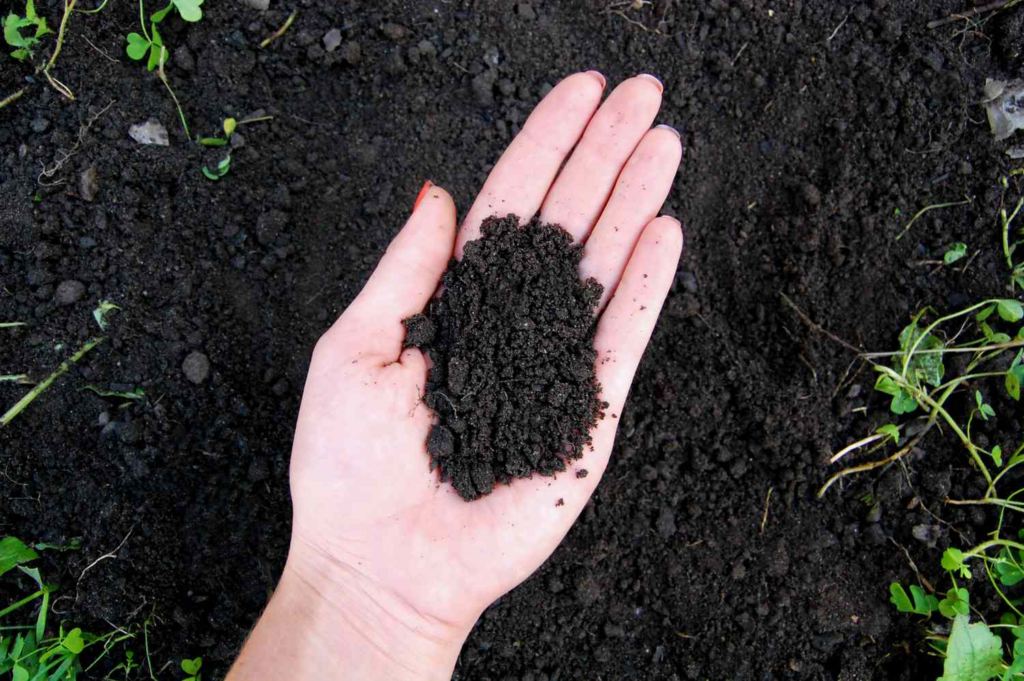
This soil blend is a true champion, with just the right balance of sand, silt, and clay. It’s like finding the perfect recipe for a deliciously moist yet well-drained cake.
Having this blend in your garden is like having the Goldilocks of soils – not too heavy with clay, not too loose like sandy soil, but just right with a touch of silt that keeps everything in harmony.
When these three amigos come together, they create a loamy paradise that’s a plant’s best friend. Trust me, even your garlic bulbs will give you a standing ovation in this soil, asking for their weekly inch of hydration or a dashing 5 to 10 gallons per square foot.
Additional Watering Tips for Growing Garlic Bulbs
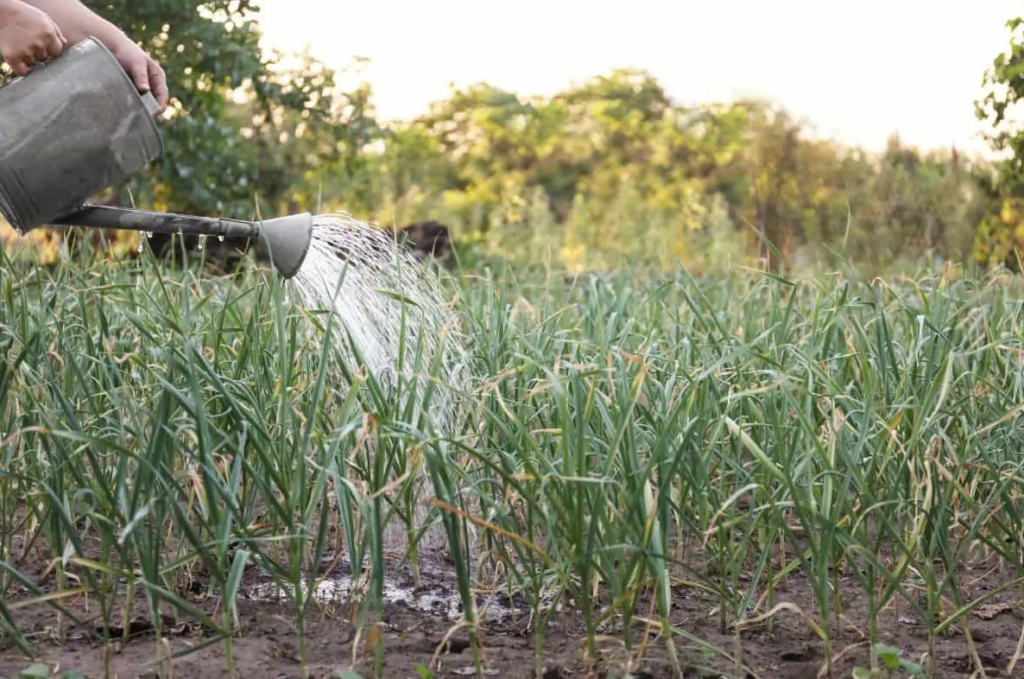
We’re not quite finished with our bag of tricks and techniques! Here are a few more savvy strategies for cultivating those garlic bulbs to perfection:
- Aim to water your greens bright and early, or when the sun takes its sweet time to set. Cooler temperatures give them the refreshing drink they need.
- When it’s time to hydrate your garlic gang, think deep and slow like a Zen master. Allow that H2O to trickle down to their roots, satisfying their thirst in a profound and meaningful way.
- Give your garlic beds a little fashion makeover with a stylish mulch. It’s like a trendy blanket for the soil, keeping it cozy and locking in that precious moisture for longer.
- If you want to get up close and personal with your garlic roots, try a soaker hose or a drip irrigation system. It’s like having a personal sommelier for each bulb, delivering water directly to their eager roots.
- A word of caution: garlic leaves don’t appreciate being showered like an overzealous fan at a concert. Resist the temptation to spray them with water, as it might encourage some uninvited fungal guests.
Remember, with these cool tips up your sleeve, you’ll be the Martha Stewart of garlic gardening in no time. Happy growing!
FAQs
Technically, you can water with a sprinkler system. But it’s not recommended because the sprinkler system will water the leaves of the garlic and may encourage fungal growth.
Instead of using a sprinkler system, use a drip irrigation system. This will deliver water directly to the roots of your garlic bulbs safely while preventing water loss from evaporation.
It’s best to water your garlic bulbs before feeding them. Watering will help the fertilizer penetrate the soil faster and reach the roots quicker.
However, you should avoid watering immediately after you feed your garlic bulbs. Doing so will wash the fertilizer away.
You can use tap water for garlic, although you’ll have to check your water if it’s high in salt or mineral content. These two elements can affect the soil’s pH level as well as its nutrient levels.
If you are concerned about using tap water, you can opt to harvest and use rainwater instead.




